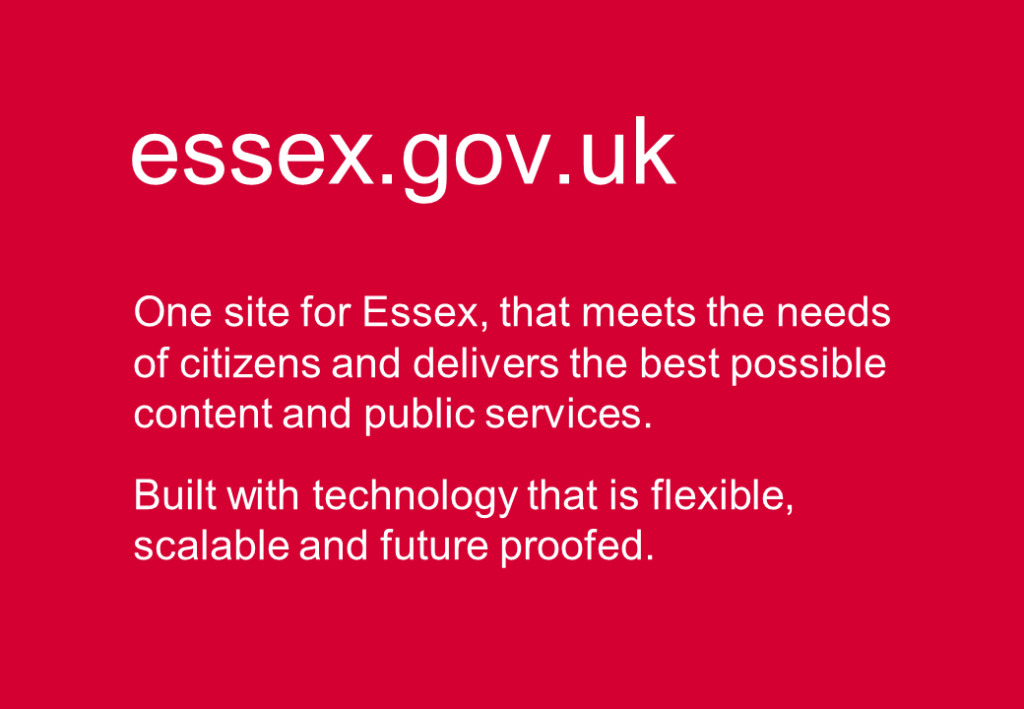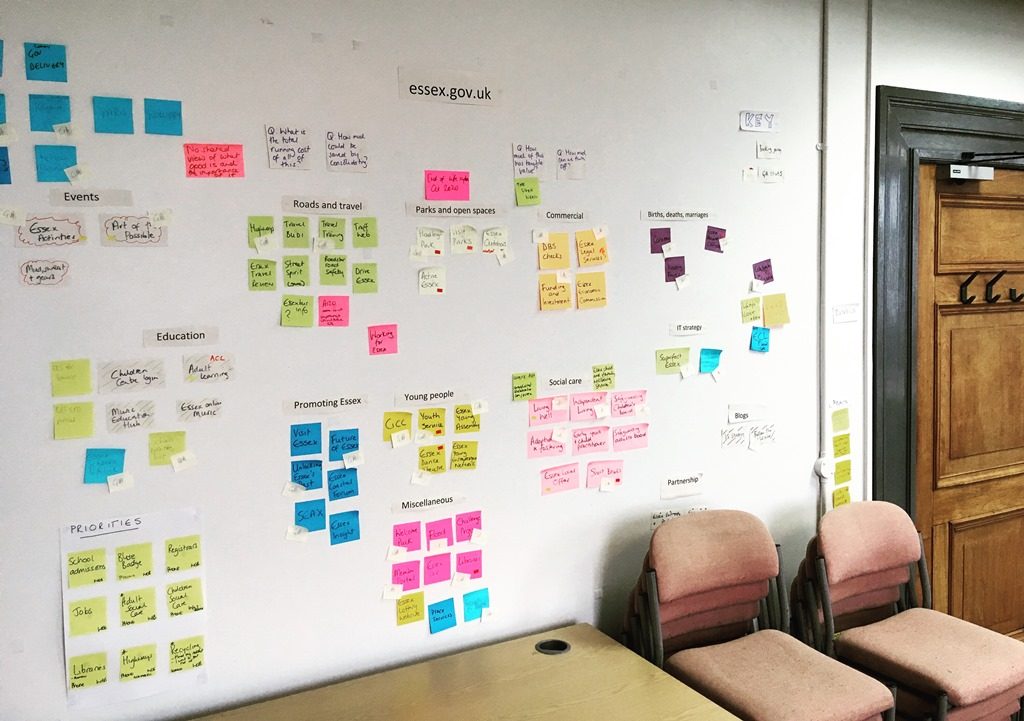Over the last few months we’ve been working to understand the current state of essex.gov.uk and plan how we might get to having a much better, user-focussed web presence.
We know that there are problems:
- The website isn’t designed for mobile use
- Residents are calling when they could use the website
- Website users are leaving negative feedback
- Services are creating their own websites because essex.gov.uk doesn’t do what they need it to do
To help us understand the ‘as is’ in more detail we’ve gathered insights from available data and call centre staff, tested how easy it is for users to find things on the site and identified some key gaps in understanding around the importance of designing for user need, measurement and accessibility.
We captured all of this in a diagnostic document which sets out:
- the context of where we are now
- a vision for where we need to be heading
- the options for delivery
The document helped to shape the agenda for a kick off meeting which took place last week. The meeting gave the project team a chance to discuss their goals, hopes and fears for the essex.gov.uk project, and by the end we all had a clear understanding of where we’re going, what the initial challenges are and what the first steps need to be to get us moving.
The vision
The Essex County Council web estate is huge: there are over 50 seperate websites.
The essex.gov.uk website hasn’t delivered what the council has needed, and this has led to services commissioning their own websites to give them basics like a responsive site that works on phone and tablet, and that can be easily updated by non-technical staff.
This means that we have key council content spread over multiple websites which don’t:
- look the same
- behave the same
- measure end to end user journeys
- capture user feedback
With this in mind the vision for essex.gov.uk is:

Recruiting the team
Getting the right team for the project is really important.
We’re building on the Government Digital Service (GDS) model for agile working so we need specialists who have done this before. They’re not roles that currently exist in the council and recruitment has been a real challenge, but we’re learning and getting better at this through the work we do.
The team has been busy working on a project to improve the Information, Advice and Guidance offer on livingwellessex.org. This has been a great opportunity to establish collaborative ways of working and it’s been fantastic to see the evolution of a supportive and productive agile team.
Governance
Talking about governance for agile delivery can sound like a contradiction. GDS has had to work through the same challenges and has helpfully described it as ‘making sure that the right things are being done in the right way’.
We know it’s really important for us to create the right conditions for quality assuring our online service delivery. This will involve working with teams like procurement, Technology Operations and Information Governance and developing policies and processes to assess and prioritise requests for new sites and products. It’s a work in progress that we’ll need to keep a focus on as the project develops.
Content strategy, structure and design
Content strategy and structure
Web content tells our citizens about our services, signposts them to other organisations that can help and provides tools to enable and support self-service. It’s the backbone of our digital service offer and it’s critical that it’s right.
We’re looking at content across our web estate and we’ll be doing a big piece of work to identify content that is:
- no longer needed
- not being looked at
- a duplicate of content elsewhere in the web estate
In addition to this, we’ll be looking at how content is organised, structured and labelled. This is the ‘Information Architecture’.

Design
We’ll be working on a new design for the site which, like all other elements of the website will be thoroughly tested with citizens, businesses and our own service teams.
We’ll use existing good practice like the design patterns on GOV.UK, but we’ll also explore our resident’s thoughts and feelings about Essex as a place in which they live and work.
Choose a technology platform and provider
Technology is listed last for a good reason. This project is about delivering great online services that are user focussed and support the needs of our citizens and businesses. Choosing the technology platform for this to sit on is important, but it shouldn’t come first and dictate everything else.
We’ll be looking at different ways of creating, managing and presenting content that meet the Service Standards.
Next steps
Once we’re happy that we’ve got enough data and insight into the existing web estate and we’ve completed the tasks above, we’ll start testing prototypes with users. This is a really important step before moving to a live website. Prototyping means that we’ll have the opportunity to:
- share the new design with services
- test it with users and make iterative changes until we’re happy it’s right
- demonstrate that what we’re proposing is technically possible
By doing this we’ll be able to:
- find problems early on and solve them quickly and cheaply
- make some estimates about how much the website will cost
- identify the biggest risks to moving to a live site
Leave a comment